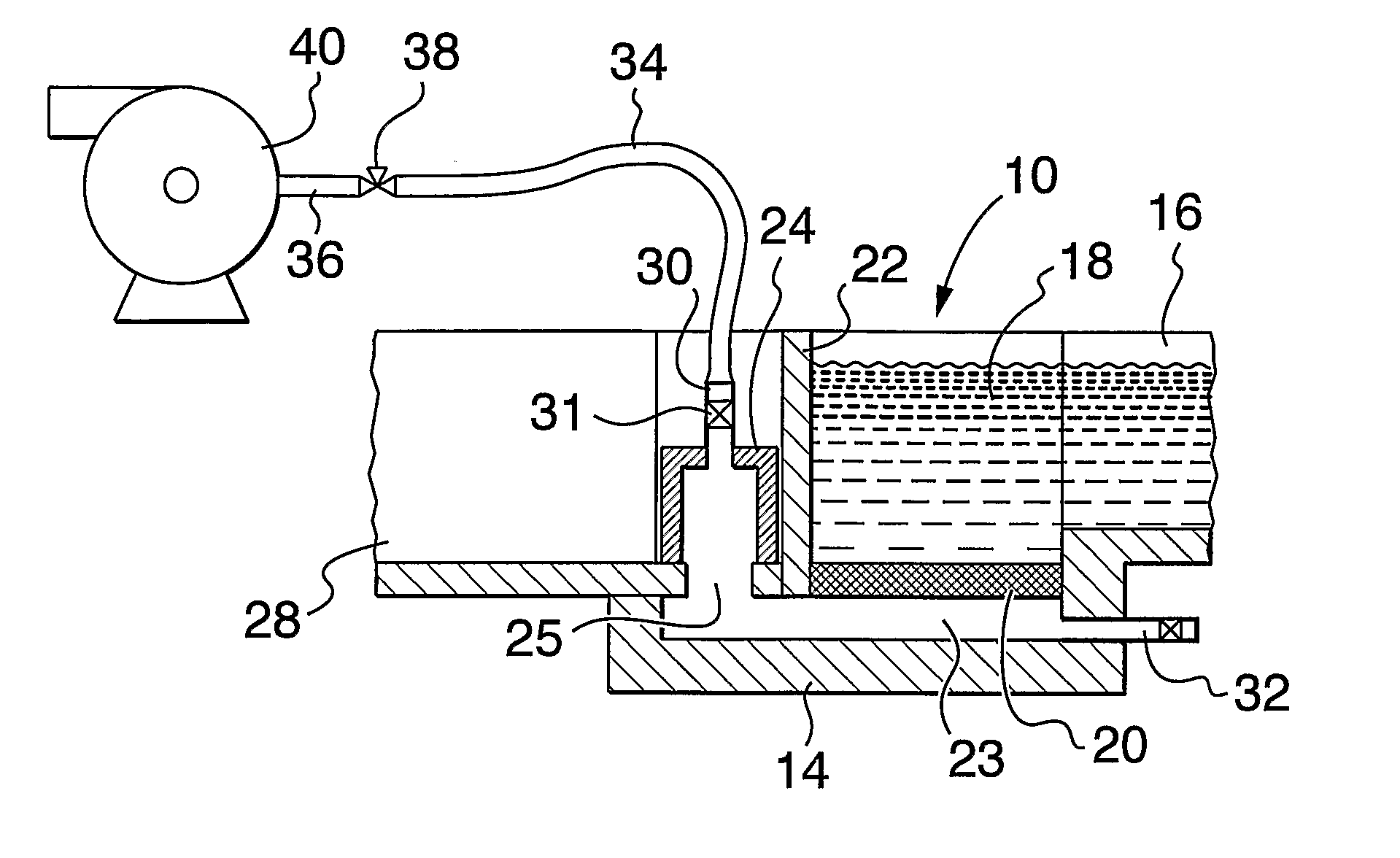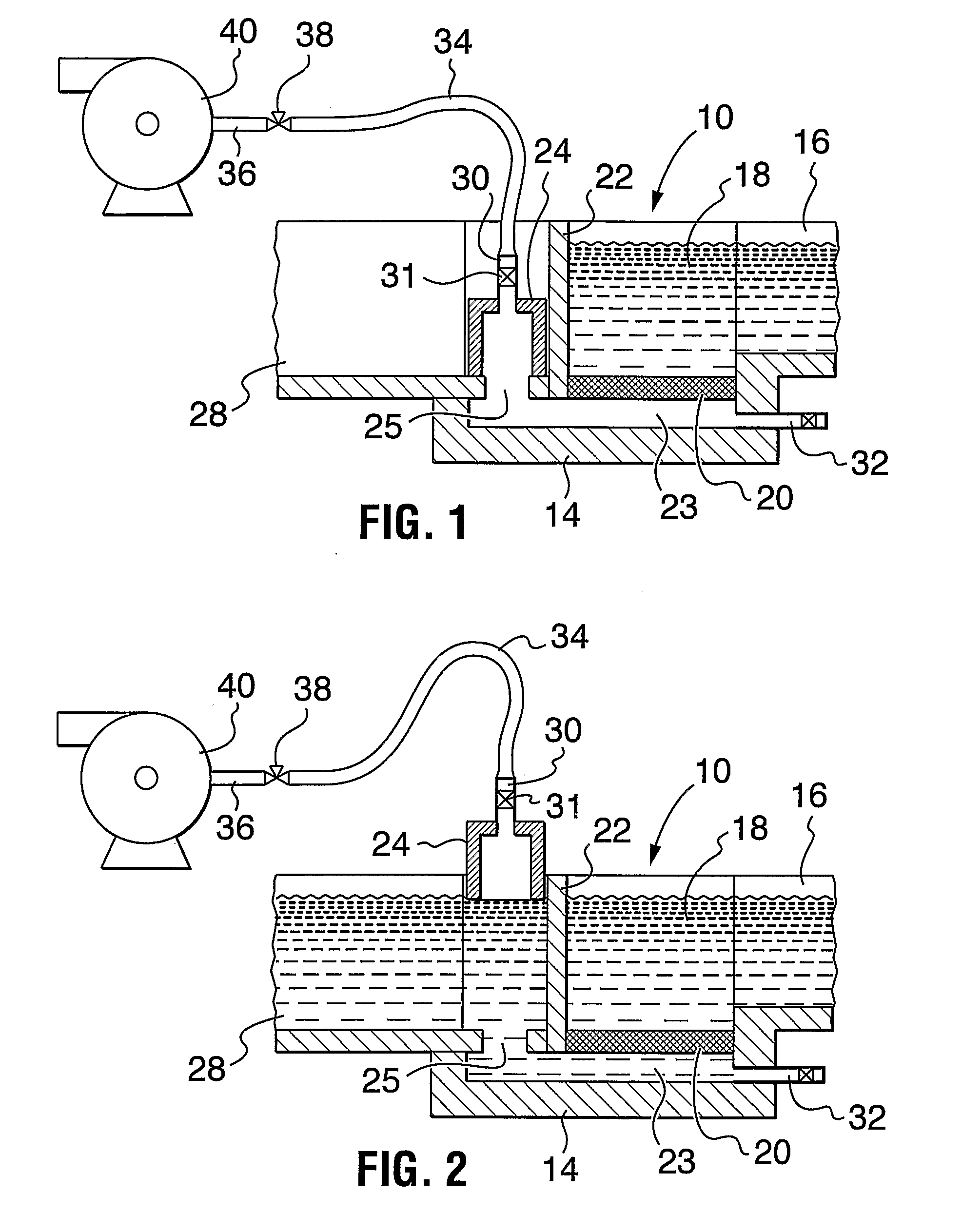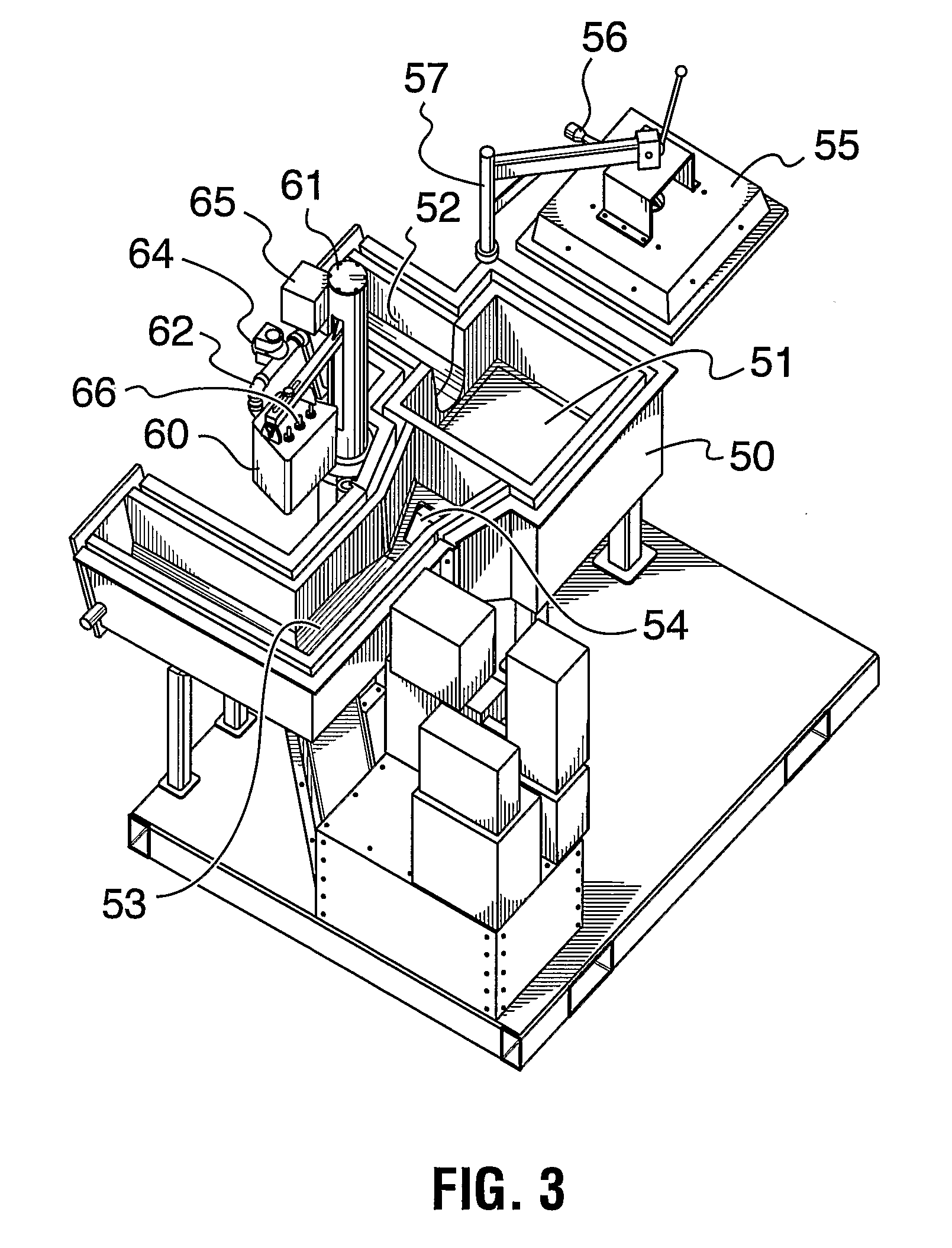Method of Priming Filter for Molten Metal
- Summary
- Abstract
- Description
- Claims
- Application Information
AI Technical Summary
Benefits of technology
Problems solved by technology
Method used
Image
Examples
example 1
[0042]A test was conducted on a pilot filtration unit of a design as shown in FIG. 1. The filter used was a commercially available filter having a pore density of 70 pores per inch (PPI). It had a thickness of 5.1 cm (2 inches) and a cross-sectional area of 929 square centimeters (144 square inches). The exit well was connected by way of a conduit to the intake of a duct fan (Spencer VB-055 manufactured by The Spencer Turbine Company, Windsor, Conn. USA), the conduit including a venting valve and a three-way valve for bleeding atmospheric air into the air being drawn into the fan.
[0043]Molten aluminum alloy was added to the filtration unit to a depth of about 20 cm (8 inches) above the filter. With the exit well and molten metal outlet trough closed, the fan was started and a three-way valve progressively moved by a motor to draw an increasing proportion of air from the exit well and a decreasing proportion of air from the atmosphere. The filter is primed within about 10 seconds, at...
PUM
| Property | Measurement | Unit |
|---|---|---|
| Time | aaaaa | aaaaa |
| Time | aaaaa | aaaaa |
| Pore size | aaaaa | aaaaa |
Abstract
Description
Claims
Application Information
 Login to View More
Login to View More - R&D
- Intellectual Property
- Life Sciences
- Materials
- Tech Scout
- Unparalleled Data Quality
- Higher Quality Content
- 60% Fewer Hallucinations
Browse by: Latest US Patents, China's latest patents, Technical Efficacy Thesaurus, Application Domain, Technology Topic, Popular Technical Reports.
© 2025 PatSnap. All rights reserved.Legal|Privacy policy|Modern Slavery Act Transparency Statement|Sitemap|About US| Contact US: help@patsnap.com



